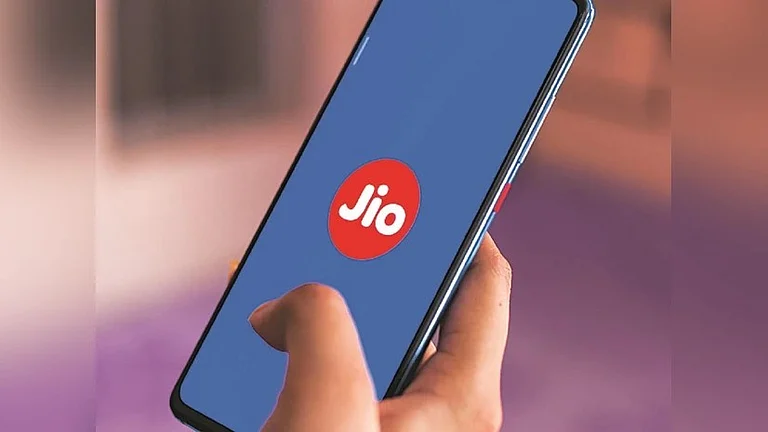What has been your philosophy in the expansion exercise since the 1970s?
It has always been our endeavour to create larger value for society and increase our economic contribution. Therefore, the whole idea has been that we should participate in newer segments. So, the philosophy is to identify market opportunities, areas where there is good headroom to grow and where our institutional capabilities can be leveraged. Secondly, we have always forayed into segments with the commitment that we will invest to become leaders. When I say leadership, it is not just the size or merely the financial metrics, but, very clearly, quality which is at the core of our DNA.
The other facet that we have always embraced, much before the “ESG” [environmental, social and governance] concept became a currency, is the “stakeholder”. We have never believed in the narrow definition of “shareholder”. It has always been “stakeholder” for many decades. Having synergistic and collaborative partnerships with all stakeholders has helped us to grow and create unique sources of advantage as well as enable sustained value creation. We have also nurtured an organisational culture that is built on the foundation of perseverance, entrepreneurial mindset and a strong will to challenge the status quo. The focus has been on making the right strategic choices. We have leveraged good things of the past to build the present.
It has been a journey of continuous challenges as we moved along, with changes in regulations, circumstances and even opportunities ... We have also not hesitated to make an exit where things have not worked out. A recent example is our lifestyle retailing business. It was not a strategic fit, so we exited.
In FY23, ITC posted revenue of Rs 69,480 crore, over 17% higher than in FY22. What led to this growth?
I would say that this is the outcome of all the interventions we have been making as part of ITC Next. On the FMCG side, it is about innovations and differentiated products that we have launched. It is also about multiplying reach in the marketplace.
For example, if you order meals at McDonald’s, in their healthy meals, you will get a beverage which has no added sugar, which is our B Natural beverage. We launched millet-based products, protein-based products and immunity booster ABC Juice, which is co-branded and goes through the Amway channel. We have also created unique products for airlines. We created the Sunfeast mango smoothie, which we were selling in Indigo. And when our B2B customers sampled it, it was extended to modern trade as well.
Making ourselves accessible across all touch points that the consumer is consuming or buying from has been an important pillar of our strategy. The volume may not be big in every channel, but, then, it is the occasion for the consumer to see and experience our brands.
Then we have made big investments in digital technology, including on the marketing side. The ratio of our spends in digital marketing has multiplied. We have made good strides in digital sales, which have gone up 7X from pre-Covid level.
Digital technologies have also been used to enhance effectiveness of our sales, which are up 17% in just one year through an intervention called PACE. We have also created alternate routes for our retailers through an app called UNNATI. It has been downloaded by nearly six lakh retailers. We find that the retailers are also looking at the portfolio and placing orders for additional items. These digital interventions are enhancing the efficiency and effectiveness of our distribution apparatus along with the enhancement in reach.
We have also invested in creating agile supply chains. We have invested in 11 state-of-the-art integrated consumer goods manufacturing and logistics facilities which are enabling larger efficiencies through de-layered operations, economies of scale, proximity to markets and by being innovation hubs of high-quality talent and technology, leading to a variety of innovative launches for us.
How can ITC Next strategy take ITC to the next level?
We realise that we are now getting into an era where uncertainties—climate emergency, geopolitical conflicts, evolving technology, etc.—will be a part of life. This is the backdrop of ITC Next.
In a period of uncertainty, organisations must be nimble and consumer-centric. So, we reinforced our organisational structure to create empowered teams which are market-aligned. A good example is our foods business, where we used to have one business unit. Now, that has been divided into clusters, and each empowered team must deal with certain products and markets in a synergistic manner. This was the route to making the organisation nimble and consumer-centric so that it can respond to changes and opportunities.
The second is multiple drivers of growth. In ITC Next, we sharpened it to identify and focus on opportunities that not only match our enterprise strengths but also leverage the mega trends of digital growth and sustainability. The areas that we have identified include sustainable packaging food tech and ITCMAARS [an abbreviation for ITC Meta market for Advanced Agricultural Services].
We have sharply defined our portfolio strategy which encompasses three buckets. The first is strengthening the core areas and investing in scaling them up; the second is leveraging adjacencies which are value-accretive; and, the third is investing in categories of the future.
In ITC Next, the other vector for enhancing competitiveness is digital transformation. It is about building a digital-first culture. It is about digital operations, digital marketing and digital products. We have leveraged digital to create personalised solutions, such as Meri Chakki Atta, where you can customise your atta. Another example in the long list is classmateshop.com, where you can customise a notebook.
ITC Next is also focussing on harnessing Industry 4.0 in manufacturing. For example, in our paperboards business, we have deployed Industry 4.0 and other digital technologies, leading to margin improvement by 230 basis points. We are also leveraging digital technology for agri-sourcing. We source through sophisticated AI-based algorithms; for example, Project Astra tells you where to buy, when to buy and how much to buy.
The third piece that we are investing in is sustainability. We have created innovative business models and interventions that can address climate risks and support livelihood generation while augmenting economic value. We are pursuing decarbonisation in a big way, with renewable sources accounting for 43% of our energy consumption. At the same time, this is creating cost advantage and adding to our competitiveness. Our hotels business is also seen as an icon of responsible luxury. It is a trend for the future. We have invested ahead of time to create a larger impact.
So, it is about building resilience and creating unique sources of competitive advantage. We have also focussed on building resilience in our supply chains to combat extreme weather events. We have undertaken climate risk modelling and pioneered a sustainable fibre value chain for our paper business. This has led to over one lakh acres of renewable forestry, adding to the carbon sink and making us the largest green manufacturer of paper.
Another pillar of ITC Next is agile and purposeful innovation. Agility comes in through investments in platforms for the future and technology for digitising the entire chain. Backed by the innovation engine residing in the ITC Life Sciences and Technology Centre (LSTC), which has been rated as the largest innovation centre in the private sector, we launched over 300 new FMCG products in the last three years. LSTC today has nearly 400 scientists and accounts for over 800 patents filed. We have also invested in integrated consumer goods manufacturing facilities that create structural advantages for us.
It was in 1974 when ITC dropped the word tobacco from its name. Is ITC Next the answer to your shift further away from tobacco?
Two-thirds of our revenues are non-tobacco, and 28% of EBITDA is from the non-tobacco businesses. This figure has improved over the years. Around 80% of our capital employed is in the non-cigarette segment. Ninety per cent of our employees are in the non-tobacco sector. We see tremendous opportunities in the newer segments where we see huge headroom to grow. For example, according to estimates, the addressable market for our FMCG segments will be over Rs 5 lakh crore by 2030. It is not about competition between segments. It is more about delivering industry-leading performance in each business segment. I think it is a natural process since other segments have bigger headroom to grow.
We have identified new business opportunities that are at the intersection of digital, sustainability and our enterprise strengths. The first new vector is sustainable packaging. Plant-based moulded fibre products is an area that is seeing fresh investments, with a manufacturing facility coming up in Sehore. The second is the food tech business with 19 cloud kitchens. That is where the synergies of hotels and the food business come together.
The third new vector, ITCMAARS, enhances the competitiveness of our agri business on one hand. On the other, it is also in itself a business opportunity, because it is a phygital crop-agnostic platform that integrates digital with an entire ecosystem to empower farmers. It provides hyperlocal personalised advisory, access to pre-approved credit, right inputs and output markets. The fulcrum of this is farmer producers' organisations (FPOs). Our vision is to reach out to 10 million farmers with 4,000 FPOs. We have already covered 1,150 FPOs with nearly six lakh farmers now.
ITC is one of the very few large companies that are still operating from Kolkata. What binds ITC to Kolkata?
Well, it was in Kolkata that we started operations and where we have been for more than a century. It has been an enriching and productive experience. So, this thought about why Kolkata, or why not Kolkata, has never crossed our minds. However, as we have diversified and developed new businesses, they have been headquartered in different places across India. Our food business is headquartered in Bengaluru. The paperboards business is headquartered in Hyderabad, and the hotels business is headquartered in Gurugram. Our R&D centre is based in Bengaluru. Our education and stationery products business and our agarbatti and matches business are based in Chennai. So, we are truly a pan-India company.






























